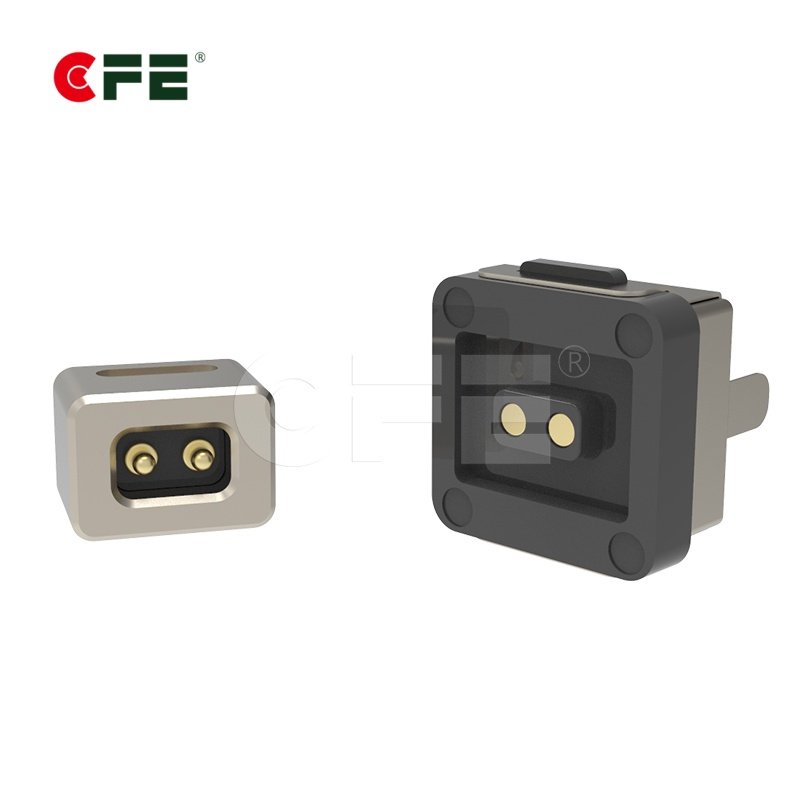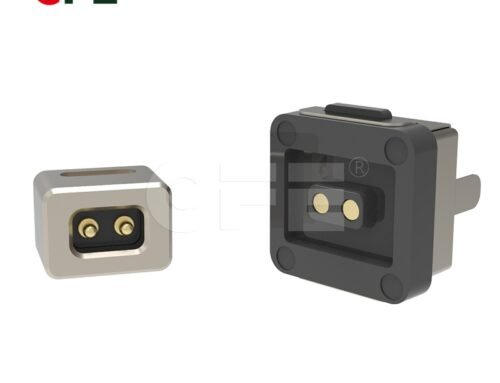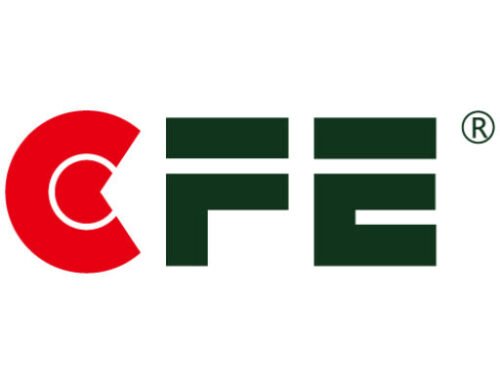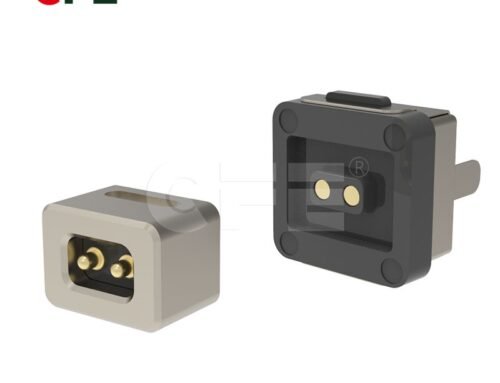2-pin DC power connectors are vital components in modern low-voltage electrical systems.
In 2025, advancements in efficiency, miniaturization, and compatibility have made these connectors more essential than ever, especially in renewable energy, consumer electronics, and industrial equipment.
This guide covers the basics, updated specs, new market trends, and what to consider before buying.
What Is a 2-Pin DC Power Connector?
A 2-pin DC power connector is a simple electrical interface designed for unidirectional current flow.
It typically consists of one positive (V+) and one negative (GND) terminal. These connectors are commonly used in low-voltage applications, like LED lighting, CCTV systems, routers, solar power kits, and DIY electronics.
Barrel-type connectors dominate this category, often measuring 5.5mm outer diameter and 2.1mm or 2.5mm inner pin. Male and female pairs are used to ensure polarity is respected and connections are secure.
They’re preferred for their simplicity, reliability, and wide compatibility.
Manufacturers are now offering improved versions with locking mechanisms, weatherproof designs, and gold-plated contacts to reduce resistance and extend lifespan.
As demand grows for compact and efficient solutions, 2-pin connectors remain a go-to option for embedded systems and IoT devices.
Key Technical Specifications for 2025
When choosing a 2-pin DC connector, understanding the latest specifications is crucial.
In 2025, most connectors support voltage ratings between 5V and 48V DC. Standard current ratings range from 2A to 10A, depending on size and material.
The internal resistance has dropped significantly due to better plating materials—copper alloy cores with nickel/gold finishes are now common.
Operating temperature ranges are broader too, from -20°C to 85°C, making them suitable for industrial environments.
Connectors also come with Ingress Protection (IP) ratings. Look for IP65 or higher if outdoor use is planned.
Modern connectors offer lower insertion force, better grip retention, and improved contact durability, typically rated for 5,000+ mating cycles.
ROHS compliance and flame-retardant casing (UL94 V-0) are now industry norms, especially in European and North American markets.
Major Use Cases and Applications
2-pin DC connectors are used where reliable low-voltage power delivery is needed.
Key applications in 2025 include:
-
Solar power systems: Commonly used between solar panels and battery controllers.
-
LED strip lights: Easy to plug/unplug and maintain polarity.
-
CCTV and surveillance: Enables simple power setups for indoor/outdoor cameras.
-
Consumer electronics: Routers, modems, audio devices, and media players often use 2-pin DC jacks.
-
Industrial sensors: Rugged connectors support consistent power in harsh environments.
-
Portable devices: Battery packs, inverters, and test equipment rely on these for reliable DC input.
They’re also essential in custom projects and prototyping, where modular connections simplify system design and maintenance.
Recent Trends Shaping the 2-Pin DC Connector Market
The market for DC connectors is shifting in 2025 due to:
-
Miniaturization: Smaller connectors with high amperage ratings are becoming standard.
-
Eco-friendly materials: ROHS and halogen-free plastics are now widely adopted.
-
Universal fitment: More devices are supporting multi-size barrel inputs or modular adapters.
-
Higher current designs: Support for 10A+ loads is more common in compact footprints.
-
Smart locking mechanisms: Anti-loosening twist locks and clip locks improve connection security.
Wireless power delivery and USB-C are rising alternatives, but 2-pin DC connectors still offer unmatched simplicity, cost-efficiency, and stability in static setups.
How to Choose the Right 2-Pin DC Connector
Selecting the right connector prevents overheating, voltage drops, and equipment failure.
Consider voltage, amperage, polarity, plug size, build quality, and environment.
Connector Size and Voltage Compatibility
Match the plug diameter with your device’s socket.
Standard sizes include:
-
5.5×2.1mm (most common)
-
5.5×2.5mm (higher current)
-
3.5×1.35mm (for compact electronics)
Voltage mismatches can damage your device or cause underperformance. Use a multimeter to verify the output voltage from your power source.
Cable Gauge and Amperage Rating
Use a wire gauge appropriate for the current load.
-
22 AWG: up to 3A
-
20 AWG: up to 5A
-
18 AWG: up to 7A
-
16 AWG: 10A or more
Thicker cables reduce resistance and heat buildup. Always check the maximum current rating of both the cable and connector.
Final Thoughts and Recommendations
2-pin DC power connectors remain essential for efficient, low-voltage power delivery.
With evolving tech in 2025, their designs are more durable, efficient, and compliant with global standards.
For reliability, always choose connectors with gold-plated contacts, appropriate current ratings, and IP protection if needed. Double-check compatibility with plug size, voltage, and cable specs.
For industrial or outdoor use, opt for locking designs with higher IP ratings. For electronics projects, modular male/female pairs offer flexibility.
In an era of fast-paced innovation, some technologies change rapidly, but the 2-pin DC power connector continues to serve as a dependable workhorse.




